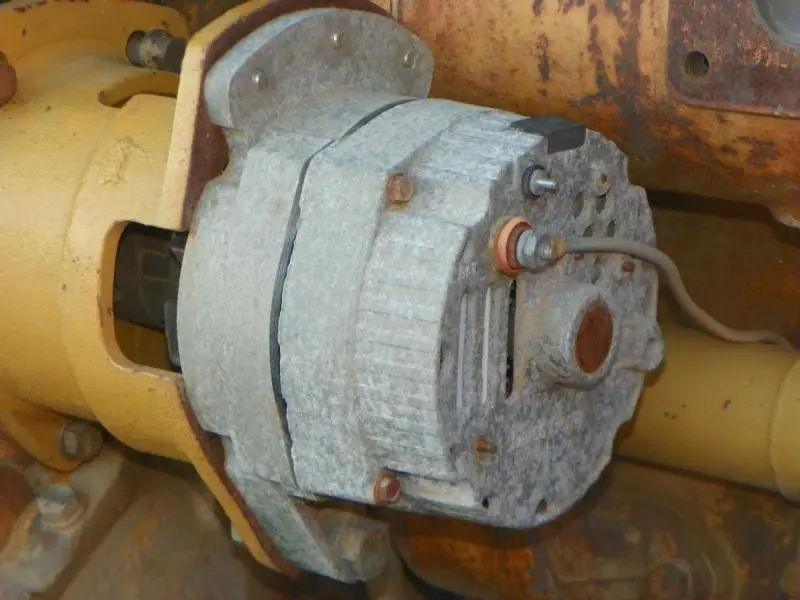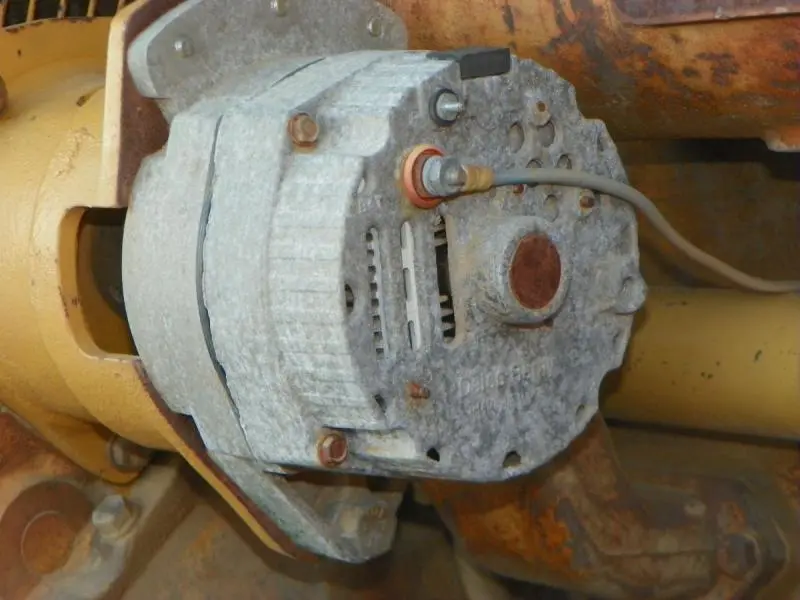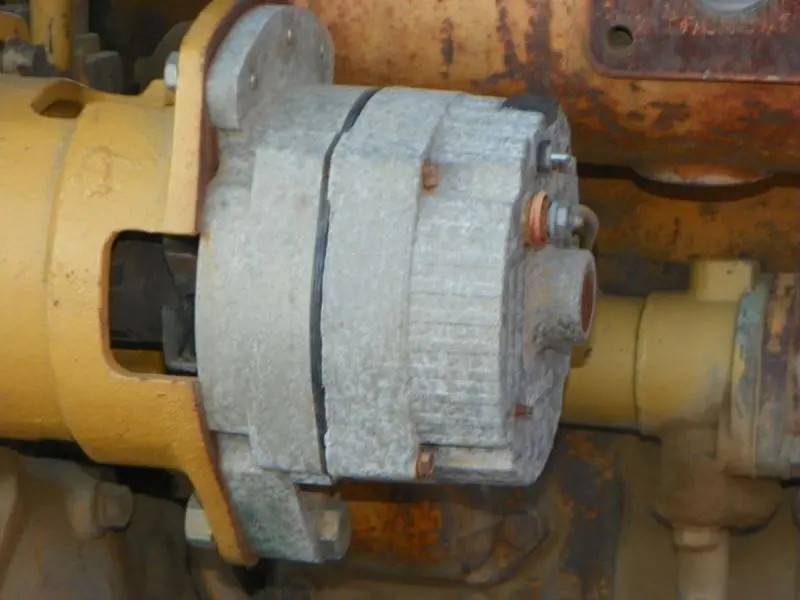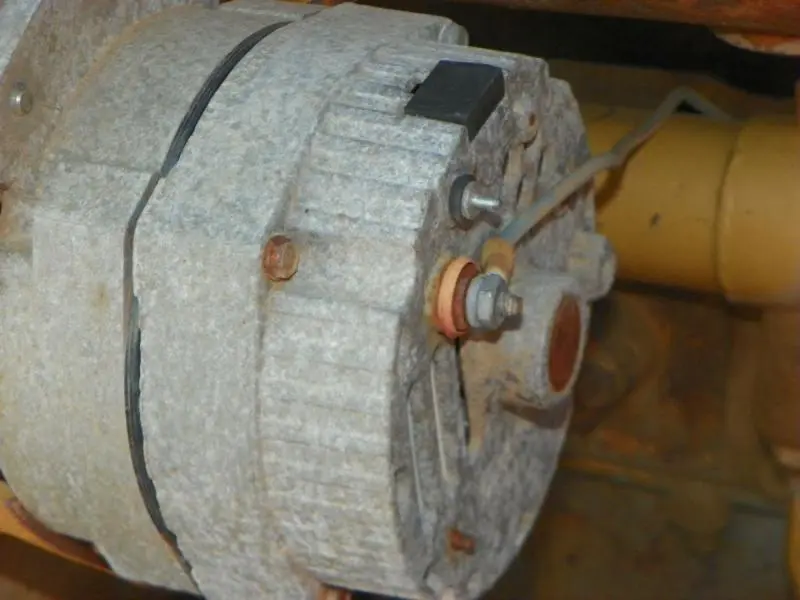



It is a delco 10si 30 amp or 12si 70 amp. Self exciting. ( internal volt regulator) Only uses 1 wire. Sometimes takes considerable rpm to make it excite. Are the batteries low? Batt to R may make it think the batteries need a charge. Soon as it charges reg senses that batteries are up. On hot rods they run a wire from batt to terminal 2 to improve sensing. Early si alternators were wired with terminal 2 going to battery on the ignition switch where voltages are slightly less than right at the batt terminal. Give me a call if you need more help. John
if the alternator is still 12 volt there should be a parallel switch somewhere to charge the 24 volt. are you sure the starter is not 12 volt? i "correct myself" the 10si is a 24 volt alternator. i didn't know they made a 24 volt single wire alternator. i would confirm the alternator is indeed a 10si and move from there. sorry for the confusion.
Most auto parts stores will test for free.
The worst thing about 1-wire alternators in slow-revving applications is that you have to wind it up to make it kick in & start charging. Not the best thing for a cold engine...
The second worst thing is that they sense voltage right at the alternator, which is the worst place to do that...a 3-wire senses voltage at the switch, which accounts for voltage drop between the alt & the load. A 1-wire will never keep the batteries at full charge.
Yeah, I know they are easy to hook up & cheap...
If it's a rebuilt, there is probably no numbers on it to go by.
To test the regulator, and brushes etc, rev it up and then use a small screwdriver etc to short the regulator tab to the housing. It is located in a D shaped hole in the rear of the housing. If regulator is faulty the voltage will immediately rise (to higher than normal if the batteries are fully charged). If there is some other problem with it, shorting the regulator to full field it will have no effect on the voltage.
They aren't too hard to disassemble and replace brushes, regulator etc. Easiest thing is to take it to a shop that works on starters and generators etc. It should be an easy fix for that kind of shop. If you want a new one you can find a 10SI 24 volt Negative ground with the standard housing online at places like Rare Electrical etc. You would have to swap the main housing to the Motorola type. Just have to pin the brushes back in the holder before reassembly and pull the pin once it's back together.
...for all of the suggestions. I think my problem is the regulator and low RPMs. I probably won't have time to do much with it for the next several days (the tractor returned home last SUN though). I think I'll jump the #2 terminal to the BAT terminal and see what happens as I see those two connected in some 10si wiring diagrams. I think I did that to an inoperative charging system on an old Owatonna (sp?) loader about a year ago (I wired it to the ignition switch).
Thanks again, Daron
P.S. Lovejoy- That's it!
Try running a temporary wire from 2 back to the ing. (away from main output)